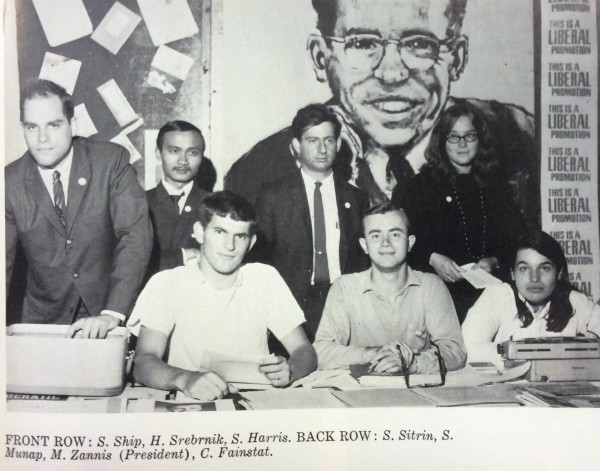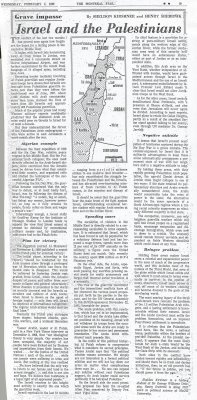
On Feb. 5, 1969, almost 47 years ago, my friend Sheldon Kirshner and I published an opinion piece in the now-defunct Montreal Star, entitled “Grave Impasse: Israel and the Palestinians.” We were both university students at the time. (He went on to a career in journalism on the Canadian Jewish News in Toronto.)
This was just 20 months after the 1967 Arab-Israeli war, in which Israel defeated Egypt, Jordan, and Syria, and conquered the entire Sinai Peninsula, Jordan’s West Bank (including the Old City of Jerusalem, home to the sacred sites of Christianity, Islam and Judaism), and the Golan Heights overlooking the Sea of Galilee.

The article was at the time so at odds with conventional opinion in the Jewish community that even our ID tag caused trouble.
In those days, the Star published more than one edition per day. In the earlier one, we were identified as co-editors of a small Montreal-based magazine, the Canadian Jewish Digest, as well as by our two Montreal-area university affiliations.
The owner of the periodical, Herman Cohen, received so many complaints about the article that he asked the newspaper to remove his magazine’s name from the ID tag. The next edition listed only our respective universities.
What was so contentious about the article? In retrospect, as it has turned out, nothing. It has certainly stood the test of time. Had we been listened to, Israel would probably face less of an existential threat today from, among others, Iran.
By hanging on to the territories, Israel lit a blazing fire in the Middle East. Two more major wars would follow, in 1973 and 1982.
Religious Israelis, based on their messianic interpretation of Judaism, began to settle on the West Bank, the old biblical Judea and Samaria, as well as in the Gaza Strip and Golan Heights.
In response, Palestinians turned to terrorism, and Islamic fervour swept the Middle East. Today, Israel faces on its borders Hamas in Gaza (which Israel vacated in 2005) and Hezbollah on the once-quiet Lebanese border.

Could all of this have been foreseen? We think we did so.
Here’s some of our argument, in the 1969 piece:
“By holding these areas, with their rapidly growing Palestinian Arab population, the age-old Zionist dream of a Jewish state might collapse in one of two ways: If the state retained its parliamentary structure, and Arabs eventually outnumbered Jews, the Arabs could conceivably take the reins of power in the state. The alternative would be the sorry spectacle of a South African-style regime where a ruling racial minority suppresses an ethnically different majority in that state.
“Holding these areas makes Israel seem a colonial and expansionist power in the eyes of much of the progressive world, and this includes most of the nations of the Third World.”

We concluded that “the Palestinians must have, like the Jews, a national home, preferably within the borders of pre-1947 Palestine.” We proposed the West Bank and Gaza.
Our suggestion has become the “two-state solution” much of the world now advocates — although, as we know, that has not yet come to pass.
Henry Srebrnik is a professor of political science at the University of Prince Edward Island.

